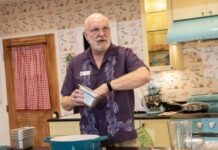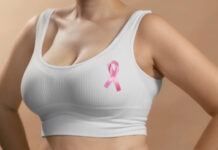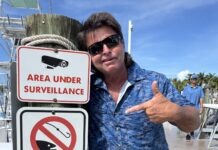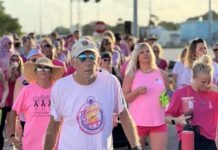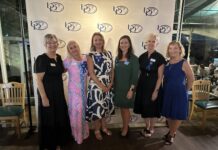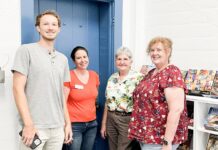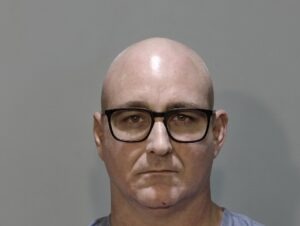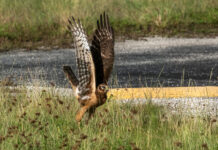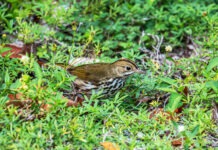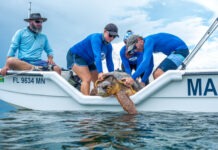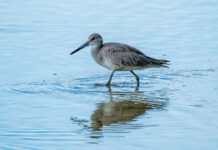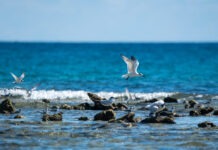I was about to head out on my road bike when my future wife said, “Put a helmet on. I’m not changing your diaper.”
That was years ago.
I grumbled, but slapped the helmet on my head, and snapped the chinstrap closed, because even if you don’t like wearing one, helmets with open chinstraps are useless.
I loved the bike I was riding, but it was something of a Frankenbike, a bunch of old components on a slightly-less-old steel Peugeot frame. It had been a pretty good bike up to that point, even if only one of the brakes really worked.
Coming down the Garrison Bight Bridge I was probably doing 25 mph or so behind a black Ford Taurus, when the Taurus suddenly screeched to a halt. I squeezed hard on the functional brake lever, even though I still had plenty of room to stop. That’s when the cable snapped, and the universe served up for me a very clear, very illuminated moment in which I knew I was going to slam into the back of the Taurus, and there was absolutely nothing I could do about it.
I can still remember the way the plastic of the back bumper molded around me, partially absorbing the impact. And the way the edge of the trunk functioned as a fulcrum, allowing my body to pivot, and my helmeted head – thanks, Nan! – to slam into the car’s back window. The energy from all that absorbing and pivoting and slamming bounced me backwards and I flopped hard on the ground.
Lying on the pavement, in a lot of pain, bleeding a bit, I remember exactly what my first thought was: My bike. I sure hope my bike is okay. (It was not.)
This led me to understand two incontrovertible truths about my life. One, my future wife was now entitled to infinite opportunities to remind me of that time she saved my life by telling me to wear a helmet. (She has used this right surprisingly infrequently.) And two, I had an ingrained tendency to be concerned about material things over personal wellbeing.
The thing about ingrained tendencies is that, while you may recognize them in yourself, you can’t always do anything about them.
I was thinking about this, and vaguely about that bike crash, last week while walking along the south edge of Ohio Key.
For anyone who hasn’t been there, the south side of Ohio Key is a great bit of Florida Keys habitat. The interior is almost entirely a salt pond. The outer edge is coastal, with great views of open ocean and the Seven Mile Bridge. But there is also this shelf/apron of Miami oolite, about 30 yards wide, that is sometimes submerged and sometimes exposed, which shore birds love.
The oolite shelf, however, is uneven and sometimes slick in unexpected places, offering copious opportunities to twist an ankle, stumble or slip, especially if you’re looking harder for birds than tripping hazards.
It wasn’t as dramatic a risk as riding a bike into an unmoving object, but there were some low-grade similarities.
I had my binoculars slung over my left shoulder, my camera over my right. But by some pre-cognizant decision I was also holding my camera slightly out and up, away from my body. Because if I went down I would have a lower likelihood of smashing my camera or submerging it in saltwater. I might protect my head, but anything else would be secondary. Cuts and bruises heal, but replacement cameras are costly.
I’d stopped over on Ohio Key because as I was driving by I noticed that the interior salt pond, which at its fullest covered about 15 acres, looked to be down to about four acres. And in that condensed amount of water, there were a lot of birds.
It was easiest to differentiate the wading birds, because they were bigger and moving around more – reddish egret, snowy egrets, tricolored herons, green herons, great egrets.
But beyond them, flocks of hundreds of loafing shorebirds – ruddy turnstones, black-bellied plovers, semipalmated sandpipers, semipalmated plovers, willets, sanderlings, short-billed dowitchers — all needed to be counted by the dozen. They were all very distant and in terrible light, but it was just edifying to see so many birds at once.
After a while, though, I went down to the water and started walking along the oolite apron to see if there were any other closer birds there. I walked for a long time, but only managed to see a small flock of least sandpipers.
At some point, there was a bit of an opening onto the back of the salt flat. Looking through it I scanned for nearby birds, but the big flocks were hundreds of yards away. I remembered standing at that exact spot about a year-and-a-half before and seeing an American flamingo wading through knee-deep water.
A lot of land in the Keys can’t be trusted, as it can be near impossible to tell what is solid ground and what is treacherous muck, especially along the edge of a salt pond. I’ve found myself knee deep in the muck after thinking I was on solid footing more times than I can count.
This all looked so dry, cracked and desiccated though, so I took a step out onto the marl. It crackled beneath my foot. I was holding the camera out and away from my body again, but I did not sink. Not even a little bit. So I made my way back toward the car along the edge of the pond. I even let the camera just hang on its shoulder strap.
I drove by Ohio Key again early this week, and the volume of the water in the salt pond had been even more dramatically reduced, down to maybe half an acre. The wading birds were gone, but there seemed to be just as many, if not more, loafing shorebirds. And they were closer to the edge of the pond.
I took some shots from high up on the embankment, then made my way closer to the pond. Flip flops might not have been the smartest footwear choice, but I wasn’t going that far.
At the bottom of the embankment the underfoot substrate switched from oolite to dried, cracked, desiccated marl, my new safe space.
I took two steps out onto the edge of the pond, and immediately sank up to my knees. Then I started to lose my balance.
Fortunately I’d had my hand on the camera, and had it lifted above me as I slowly went down, my butt falling onto the hard and spiky oolite. I slipped the strap over my head and put the camera down gently on the rocks.
It took me two or three minutes to dig my first flip flop out of the muck, another five or eight minutes to dig out the next one. My feet were so slick with mud I had to very carefully walk barefoot back up to the highway.
The important thing was that the camera was fine.

